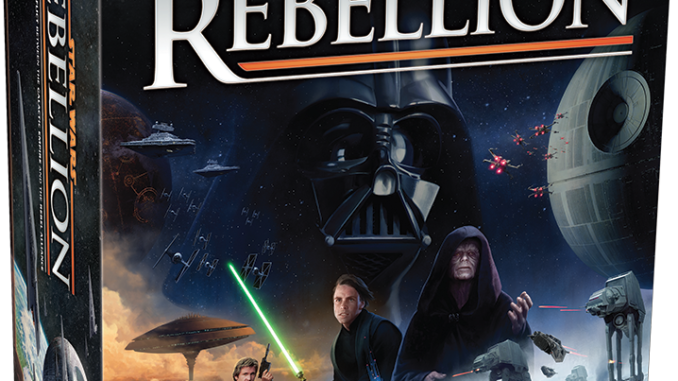
“If you find yourself in a fair fight, your tactics suck.” – American Axiom
In case you hadn’t noticed, I am a huge fan of FFG’s Star Wars: Rebellion strategy board game. I’ve used it quite a few times as an example throughout the Command School series. It’s high time I give it the same treatment I gave Dominion: a Commander’s Assessment.
Much like that post about Dominion, this isn’t so much a review as a discussion on how Rebellion provides tactical and strategic exercise to some of the concepts I have covered in this series. For a review, check out this review from Ars Technica for the base game and this d20radio review by Scott Alden for the expansion.
My Take
If you’ve read Command School, there is a pretty good chance you know I love Rebellion. This game is a staple for when I want a bit of a heavier game without necessarily busting out hex maps or something like GMT’s COIN series. It has a strong theme, relatively easy rules, and offers a fair selection of options for the two asymmetrically matched sides. I’ve got a good little crew available to play it and am happy to say I have tried it all three ways: 1v1, 1v2, and 2v2. With two good reviews available, linked above, I’ll draw your attention to just two points.
First, the game is wonderfully asymmetric. The Rebels are heavily outnumbered from the start and have far lower component limitations on their forces than the Empire. But, they don’t need to win so much as not lose: surviving long enough alongside scoring some Reputation points for sticking it to the man is enough to light the fires of a wider rebellion. The Empire starts with more forces and should be able to churn out a ton of plastic by late game, but has to figure out how find the Rebel base before time runs out.
Second, even within each faction there are broader strategic choices to be made. Should the Rebels remain covert, focusing on missions and stealthy sorties from the base? Or should they show no fear by garrisoning worlds, perhaps in the Outer Rim? And the biggest question of all: where to put that Rebel base? As the Empire, do you fan out your forces, spreading wide yet thin, or keep a sledgehammer force together while spies scour the galaxy? Is the Project deck a waste of time or the path to the ultimate power in the universe? With the Rise of the Empire expansion, as Scott Alden’s review outlines, there is even more choice with players being able to pick between two flavors of Mission Cards and employ Advanced Tactics Cards in battle.
Lessons to be Learned
Although I’ve alluded to some points above, let’s dig a little deeper into three aspects of a game of Rebellion: asymmetry, deception, and strategy and tactics.
Asymmetry
As explained above, asymmetry is at the core of the Rebellion experience. While the Empire can rely on overwhelming might to seize what they want while simultaneously sweeping the galaxy, the Rebels will need to pool most of their forces if they want to fight a major battle and win. Although the Rebels have time on their side and can adopt a cautious approach, the Empire is fighting against the clock as every turn brings the Rebels closer to victory. Both sides play quite differently and the best players understand those differences to not only plan their own moves, but anticipate how the other side will use play their drastically different hand.
Deception
Deception is at the heart of war. Of course the Rebels must employ deception to keep their base hidden, but the game’s hidden Mission Card system provides ample opportunity to set traps and employ misdirection. Is the Imperial player planning to capture a Rebel leader with that face down Mission Card under Darth Vader or Boba Fett, or is it merely a ruse? Experienced Imperial players may have a sense of what Objective Cards the Rebels might have, but this only adds more opportunities for deception. Deceptive Rebel players can feed expectations to force the Empire into making the wrong move, setting up for the Rebels to score their true objective and rack up more Reputation. The interactions of the game’s multiple, simple systems sets up for a variety of options for deception and psychological manipulation.
Strategy vs Tactics
Returning to my very first post in this series, this game was the example for a reason. While both sides must choose the right tactics to achieve their strategic end states, it is the Empire that has the most opportunities to fall into the trap of winning the battle and losing the war. This is because the Empire has so many options. Does the Imperial player deck the Project cards so they can put wonder weapons into the field such as super star destroyers, interdictor cruisers, and super laser strikes? Or do they focus on capturing and potentially sarlaccing, carbon freezing, or corrupting those leaders? Maybe they strike out and clear planets of Rebel forces? All potentially good approaches, but each could be a complete waste of time and resources if not part of the appropriate game winning strategy.
Christopher Hunt
Latest posts by Christopher Hunt (see all)
- Command School – Deterrence and Compellence - July 11, 2019
